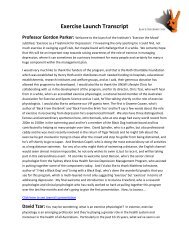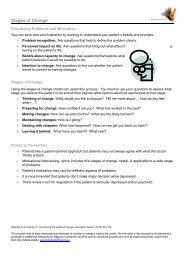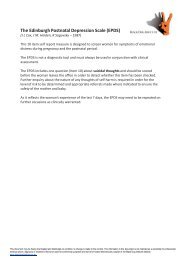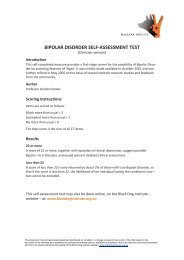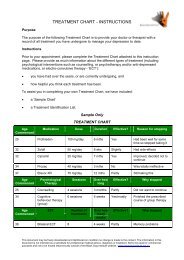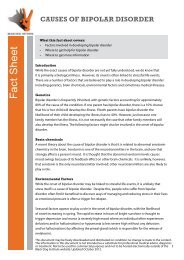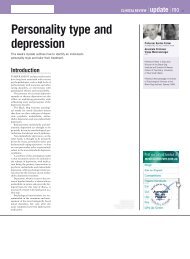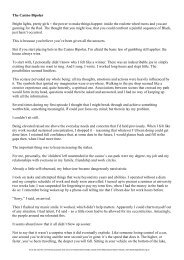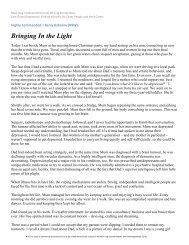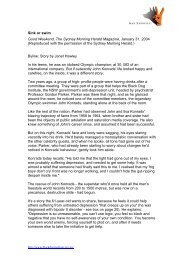Download a PDF of the 2012 Annual Report - Black Dog Institute
Download a PDF of the 2012 Annual Report - Black Dog Institute
Download a PDF of the 2012 Annual Report - Black Dog Institute
You also want an ePaper? Increase the reach of your titles
YUMPU automatically turns print PDFs into web optimized ePapers that Google loves.
ManagingDepressionGrowing OlderA guide for pr<strong>of</strong>essionals and carersHealthy BrainAgeingResearch Leaders – Pr<strong>of</strong>essor Henry Brodaty,Pr<strong>of</strong>essor Perminder Sachdev‘Greying <strong>of</strong> <strong>the</strong> <strong>Black</strong> <strong>Dog</strong>’Kerrie Eyers, Gordon Parker and Henry BrodatyAn estimated eight per cent <strong>of</strong> older adults inAustralia experience depression and <strong>the</strong> number willincrease as <strong>the</strong> population ‘greys’.<strong>Black</strong> <strong>Dog</strong> <strong>Institute</strong> partners with affiliateorganisations such as <strong>the</strong> UNSW Centre for HealthyBrain Ageing to find answers to help older Australianslive a productive and healthy life in <strong>the</strong>se golden years.Research activity from <strong>2012</strong> includes:Reducing behavioural and psychologicalsymptoms <strong>of</strong> dementia in <strong>the</strong> community – Nonpharmacologicalinterventions delivered by familycaregivers have <strong>the</strong> potential to reduce <strong>the</strong> frequencyand severity <strong>of</strong> behavioural and psychological symptoms<strong>of</strong> dementia, with <strong>the</strong> effect at least equallingthat <strong>of</strong> pharmaco<strong>the</strong>rapy.Changing topological patterns in normalageing – Researchers examined normal ageing from<strong>the</strong> perspective <strong>of</strong> topological patterns <strong>of</strong> structuralbrain networks constructed from two healthy agecohorts 20 years apart. We <strong>the</strong>n constructed structuralbrain networks using 90 cortical and subcorticalregions as a set <strong>of</strong> nodes, and fur<strong>the</strong>r analysed <strong>the</strong>topological properties <strong>of</strong> <strong>the</strong> age-specific networks.We found that <strong>the</strong> brain structural networks <strong>of</strong> bothcohorts had small-world architecture, and <strong>the</strong> oldercohort (age range 64-68) had lower global efficiencybut higher local clustering in <strong>the</strong> brain structural networkscompared with <strong>the</strong> younger cohort (age range44-48). The older cohort had reduced hemisphericasymmetry and lower centrality <strong>of</strong> certain brainregions, but that <strong>of</strong> <strong>the</strong> prefrontal cortex (PFC) wasnot different. These structural network differences mayprovide <strong>the</strong> basis for changes in functional connectivityand cognitive function as we age and may explain <strong>the</strong>development <strong>of</strong> cognitive disorders and depression inold age.BLACK DOG <strong>2012</strong>29



